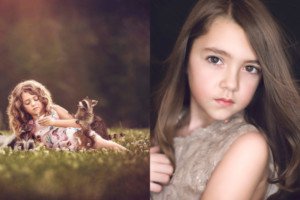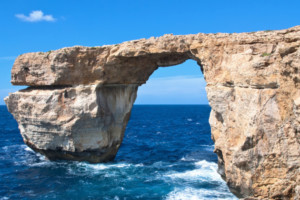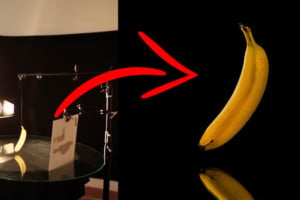
When I first started photography, I struggled a lot with lighting. In the beginning, we’re often told to shoot our subjects in open shade, but if you don’t know how to do this properly the results can be disastrous: faces with dark shadows, eyes with no depth, overexposed backgrounds, etc.
One of the best known photography locations in the world has disappeared. Malta’s famed Azure Window limestone arch on the island of Gozo collapsed into the sea yesterday, leaving a conspicuously, tragically empty space in its wake.
It doesn’t matter if you’re a beginner, intermediate, or even a professional, you’ll want to give Broncolor’s free “How To” page a look. There, you’ll find nearly 100 pro lighting examples—beautiful photos, each accompanied by a gear list, description, and lighting diagram. It’s a tutorial gold mine.
Ever since the advent of digital cameras, some film photographers have dreamed of having a way to convert their beloved film cameras into digital ones. Photographer Robin Guymer took matters into his own hands: using his knowledge of electronics, he converted a Sony NEX-3 mirrorless camera into a digital back for his film Nikon FE SLR camera.
Popular Photography, the largest circulated imaging magazine that launched its first issue in May 1937 in New York City, has ceased publication after being continuously in production for 80 years. The March/April 2017 issue will be the last in print.
YouTuber Chris Chris captured the above video showing what happens when your camera’s frame rate is perfectly synced to the rotation speed of a helicopter’s rotor: the blades are frozen at the same angles in each frame, making it look like the helicopter is magically floating around with frozen rotor blades.
Most humans can see about 1 million colors. Some people can see around 100 million. This 4-minute video by DNews is an interesting look at this condition, which is known as tetrachromacy.
The ‘desaturated urban look’ is incredibly popular these days, especially among rooftoppers and other city photographers who want to give their images a moody, gritty feel. Check out this video to find out how you can create this same look in Lightroom.
Another day, another lens comparison takes on Sigma’s “king of portrait lenses,” the 85mm f/1.4 Art. This time, our friend Usman from Sonder Creative tested the Sigma 85mm against Sony’s well-liked 85mm f/1.4 GM out in the real world to see which of the two 85s he preferred.
We’re not entirely sure why, but product photography tutorials are coming hard and fast lately. So in case this DIY lightbox wasn’t good enough, and 360° product photography isn’t your thing, here’s a great tutorial that will show you how to capture killer reflective product shots on a sea of black.
This year marks the point at which I have been using Hasselblad cameras for over a decade. My first was a 201F in 2007, before moving to a 203FE in 2011 and adding a 202FA in 2015.
After nearly 80 years, Popular Photography announced that the magazine would publish its final issue on March 10, 2017 while simultaneously ceasing updates to both PopPhoto.com and AmericanPhotoMag.com.
“What lens should I buy?” It’s one of the most common gear questions that pops up in the PetaPixel inbox, and while there is no one-size-fits-all answer, photographer Peter McKinnon does a great job of explaining what’s out there and what you need to know to decide on your next lens in this informative video.
If you’ve read any photography website or stopped into a store recently, you probably know that the creative options available to photographers are as numerous as ever. One aspect of photographic gear that has seen the most rapid expansion in quality options as of late, is lens selection.
A couple of weekends ago I was playing about with some ideas for a new portfolio shot involving a wall clock. Now, this clock happens to look a bit like a pocket watch, and a pocket watch normally has a chain (see where I’m going with this?). So I figured: “what if instead of a chain, I use some wispy light trails?”
Wildlife photography and videography is more incredible today than ever before, thanks in large part to the last decade’s amazing leaps in camera technology. This behind the scenes look at the cameras used by the BBC to shoot Planet Earth II shows you how advances in camera tech have allowed us to see the creatures of the night in ways never before thought possible.
Marcus DeSieno’s Surveillance Landscapes are unlike any other landscape photography series you’ve probably ever seen. While most landscape shooters trek into the wilds, camera and tripod at the ready, DeSieno captured all of these images from the comfort of his own home… by hacking into security cameras.
Independent French bookstore Librairie Mollat is going viral, but not because of anything particularly literary. No, this publicity boost is because they’ve gotten really creative with their Instagram account.
It’s understandable that the great unwashed masses of the larger population might not appreciate contemporary art. But you’d think that photographers, who are creatives in their own right, would appreciate the art and creativity of others in all of its various forms. What I’ve seen instead is that, when it comes to much contemporary art, most (but not all!) photographers tend to dismiss the work outright.
Remember that crazy macro ‘relay’ lens Venus Optics showed off at Photokina? The Laowa 24mm f/14 Relay lens looks more like a rifle barrel than a camera lens, and now we finally get to see what it can do.





















